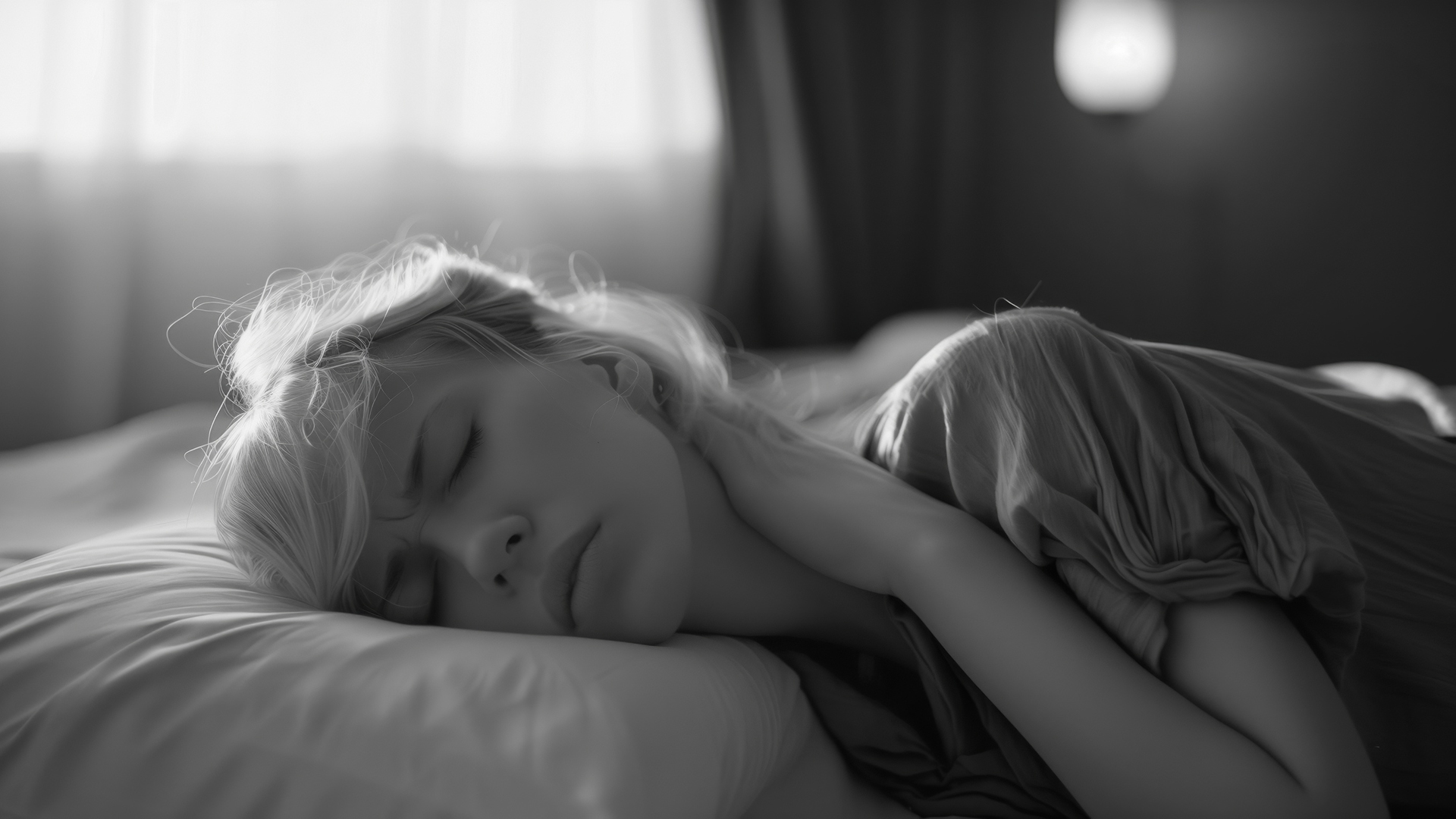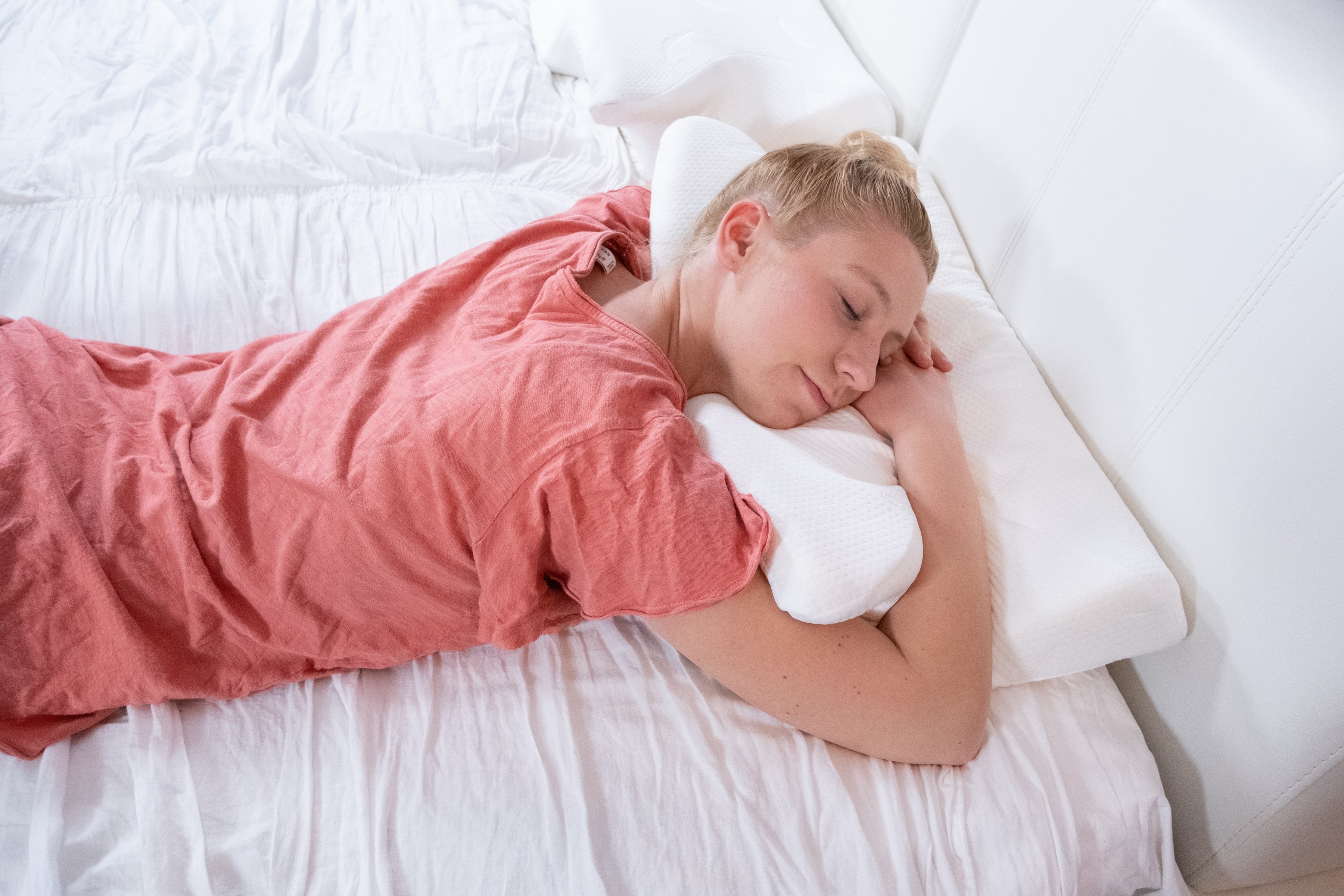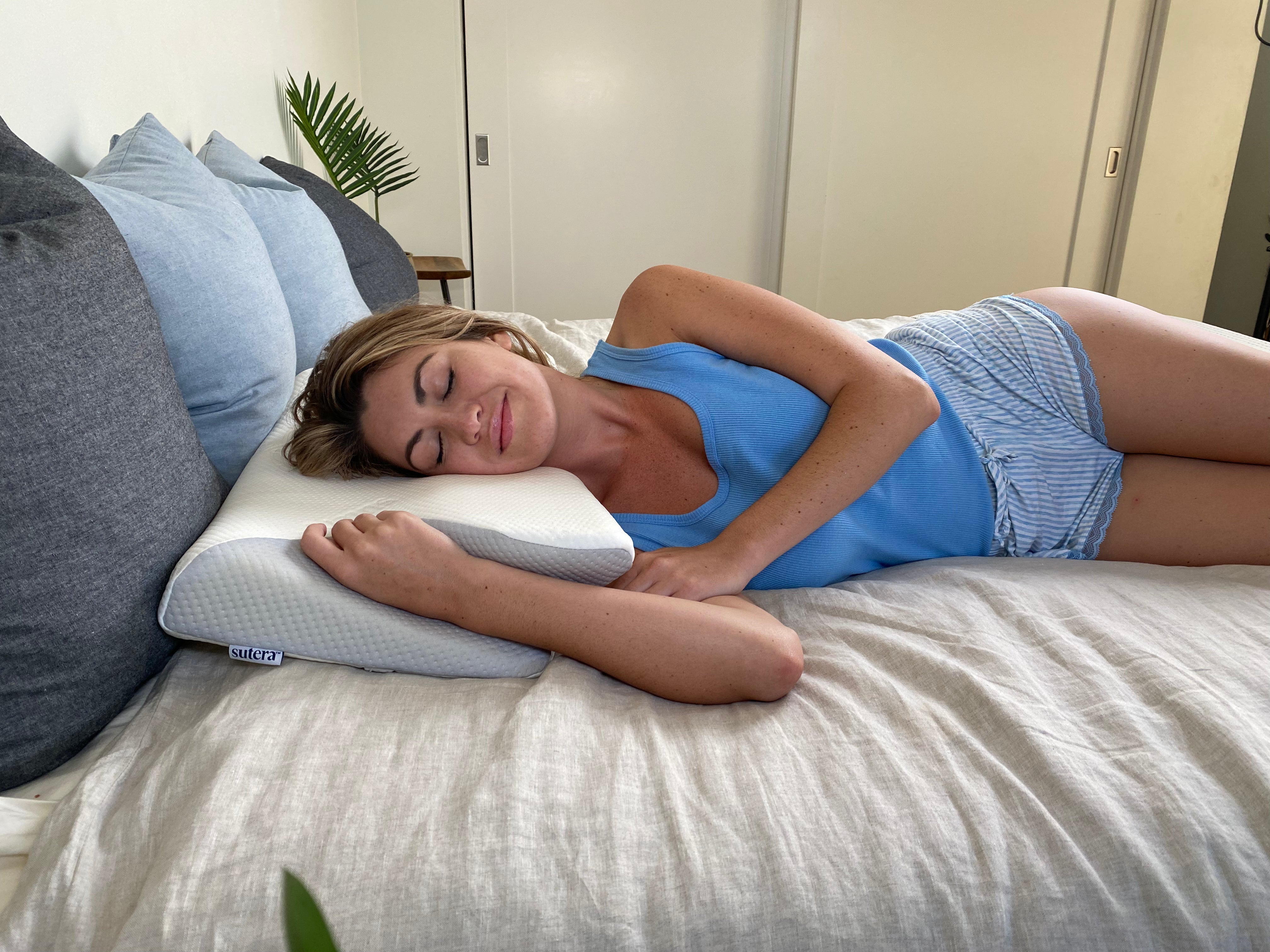*Your bedroom should be your personal restoration center*
Most bedrooms are afterthoughts - decorated with leftover furniture and whatever pillows were on sale. But your bedroom is where you spend a third of your life, where your body repairs itself, and where you prepare for everything that matters to you.
Related: Complete Bedroom Essentials, Pillow Science Guide, Wellness Bedroom Bundle
After helping millions of customers optimize their sleep environments, we've learned that a wellness-focused bedroom isn't about expensive furniture or designer aesthetics. It's about understanding how your environment affects your physiology and creating conditions that support your body's natural restoration processes.
The Science of Sleep Environment Design
Your Bedroom as a Biological System
Your bedroom doesn't just house your sleep - it actively influences your circadian rhythms, hormone production, and nervous system function. Every element, from lighting to materials to air quality, sends signals to your body about whether it's time to be alert or time to rest.
Understanding these biological responses helps you design a space that works with your physiology rather than against it.
The Nervous System Response
When you enter a well-designed bedroom, your parasympathetic nervous system (responsible for rest and restoration) should automatically begin to activate. This happens through environmental cues that signal safety, comfort, and the absence of stress.
Foundation Elements: The Non-Negotiables
Temperature Regulation
Your core body temperature naturally drops as you fall asleep. A bedroom that supports this process maintains temperatures between 65-68°F and allows for easy adjustment without disrupting sleep.
Design choices that matter:
- Breathable materials that don't trap heat
- Window treatments that provide insulation without blocking airflow
- Bedding and pillows that regulate temperature naturally
Light Management
Light is the primary signal that regulates your circadian rhythms. Your bedroom should offer complete darkness for sleep while providing warm, adjustable lighting for evening routines.
Wellness lighting principles:
- Blackout capabilities for deep sleep - Warm light (2700K or lower) for evening routines
- Natural light access for morning circadian reset
- Elimination of blue light sources near bedtime
Air Quality and Aromatherapy
The air you breathe during sleep affects everything from brain function to immune system recovery. Clean air with optimal humidity (40-60%) supports healthy sleep phases.
Natural air quality improvements:
- Materials that don't off-gas harmful chemicals
- Natural aromatherapy from sources like lavender-infused pillows
- Adequate ventilation without creating drafts
- Humidity control through natural materials
The Psychology of Restorative Spaces
Visual Calm and Mental Clarity
Your bedroom should signal to your brain that this is a space for rest, not productivity or entertainment. This means creating visual environments that promote calm rather than stimulation.
Design principles for mental rest:
- Uncluttered surfaces that don't create visual stress
- Natural materials that feel grounding
- Colors that promote relaxation (soft neutrals, earth tones)
- Minimal electronics and work-related items
Texture and Touch Therapy
Your sense of touch is directly connected to your nervous system. Materials that feel good against your skin promote relaxation, while rough or unpleasant textures can maintain tension.
Tactile wellness elements:
- Natural stone bath mats that feel grounding and substantial
- Premium towels and bedding that feel nurturing
- Smooth, natural surfaces that invite touch
- Varied textures that engage senses positively
The Sleep Support System
Proper Spinal Alignment
Your mattress and pillows should work together to maintain your spine's natural curves throughout the night. This isn't just about comfort - it's about allowing your nervous system to fully relax.
Alignment principles:
- Pillows that support your cervical spine's natural curve
- Mattress firmness appropriate for your sleep position and body weight
- Consistent support that doesn't create pressure points
- Materials that maintain their supportive properties over time
Pressure Point Management
Poor pressure distribution during sleep restricts circulation and creates micro-tensions that prevent deep rest. Quality sleep surfaces eliminate pressure points while providing adequate support.
Creating Zones for Different Activities
The Sleep Zone: Pure Restoration
The area around your bed should be exclusively for sleep and intimacy. This helps your brain associate this space with rest rather than alertness.
Sleep zone essentials:
- Orthopedic pillows designed for your sleep position
- Temperature-regulating bedding
- Complete darkness capability
- Minimal visual distractions
The Transition Zone: Preparation and Recovery
The space between your bedroom and bathroom should support the transition between sleep and wake states.
Transition zone elements:
- Comfortable surfaces for nighttime movement
- Gentle lighting that doesn't shock your circadian system
- Easy access to bathroom without harsh wake-up cues
- Materials that feel good on bare feet
The Self-Care Zone: Personal Wellness
If space allows, a small area dedicated to personal care routines reinforces the bedroom's role as a wellness sanctuary.
Self-care zone ideas:
- Comfortable seating for meditation or reading
- Storage for wellness items (essential oils, journals, etc.)
- Plants that improve air quality and provide natural beauty
- Mirrors and lighting for personal care routines
Materials That Support Wellness
Natural vs. Synthetic: Making Informed Choices
Natural materials often support wellness better than synthetic alternatives because they breathe, regulate temperature, and don't off-gas chemicals that can disrupt sleep.
Wellness-supporting materials:
- Organic cotton and linen for breathability
- Natural latex and memory foam for support without chemicals
- Stone and ceramic for surfaces that stay naturally clean
- Wood and bamboo for furniture that ages beautifully
Hypoallergenic Considerations
Your bedroom should be a refuge from allergens that can disrupt sleep and respiratory health. This means choosing materials that naturally resist dust mites, mold, and other common allergens.
Allergy-friendly choices:
- Pillows and mattresses with natural antimicrobial properties
- Washable fabrics that don't require chemical treatments
- Hard surfaces that don't trap allergens
- Good ventilation that prevents moisture buildup
Technology Integration: Helpful vs. Harmful
Sleep-Supporting Technology
Some technology can enhance your bedroom's wellness function without disrupting your circadian rhythms.
Beneficial tech integration:
- Smart thermostats that adjust temperature for sleep phases
- Sunrise alarm clocks that support natural wake-up cycles
- White noise machines that mask disruptive sounds
- Air purifiers with quiet operation
Technology Boundaries
Electronic devices that emit blue light or create mental stimulation should be minimized or eliminated from the bedroom.
Healthy technology boundaries:
- Charging stations outside the bedroom
- Blue light filters on necessary devices
- No work computers or productivity tools
- Television and entertainment in other rooms
The Gradual Transformation Approach
Phase 1: Foundation (Month 1)
Start with the elements that have the biggest impact on sleep quality:
- Upgrade pillows for proper spinal support
- Improve light control (blackout curtains, warm lighting)
- Address temperature regulation
- Remove electronic distractions
Phase 2: Enhancement (Months 2-3)
Add elements that support the overall wellness environment:
- Upgrade bedding and bath materials
- Improve air quality and aromatherapy
- Organize the space for visual calm
- Add natural materials and textures
Phase 3: Refinement (Months 4+)
Fine-tune the space based on what you've learned about your sleep and wellness needs:
- Adjust lighting and temperature systems
- Add personal wellness elements
- Optimize organization and flow
- Include plants or other natural elements
Measuring Your Bedroom's Wellness Impact
Sleep Quality Indicators
Track how environmental changes affect your sleep:
- Time to fall asleep
- Number of nighttime wake-ups
- Morning energy levels
- Neck and back comfort
Overall Wellness Markers
Notice how bedroom improvements affect your general wellbeing:
- Stress levels and mood
- Immune system function
- Skin and respiratory health
- Overall life satisfaction
The Investment in Your Personal Sanctuary
Cost vs. Value Analysis
Creating a wellness-focused bedroom requires upfront investment, but the returns compound over time:
- Improved sleep quality affects every aspect of health
- Reduced need for sleep aids or pain management
- Enhanced productivity and mood
- Long-term spinal and respiratory health
Prioritizing Upgrades
Focus first on elements that directly affect sleep quality, then expand to environmental enhancements that support overall wellness.
Frequently Asked Questions
What's the ideal bedroom temperature for sleep?
65-68°F is optimal for most people. Your core body temperature naturally drops during sleep, and a cooler room supports this process for deeper rest.
How important is bedroom lighting for sleep quality?
Extremely important. Blue light disrupts melatonin production. Use warm light (2700K) in the evening and complete darkness for sleep to maintain healthy circadian rhythms.
What bedroom materials promote better sleep?
Natural, breathable materials that regulate temperature and don't off-gas chemicals. Quality memory foam pillows, organic cotton bedding, and natural stone surfaces create optimal sleep environments.
Conclusion
Your bedroom should be the most restorative space in your home - a place where your body can repair, your mind can rest, and your spirit can recharge. This doesn't require expensive renovations or designer furniture. It requires understanding how your environment affects your physiology and making thoughtful choices that support your wellness.
Every night you spend in a well-designed bedroom is an investment in your health, productivity, and quality of life. You deserve a space that truly supports your restoration.
Ready to transform your bedroom into a wellness sanctuary? Visit [www.sleepsutera.com](https://www.sleepsutera.com) to discover how premium sleep essentials can anchor your personal restoration center.







Share:
Perfect Morning Routine: 7 Steps That Transform Your Entire Day (2025)
Best Orthopedic Pillow 2025: Science-Backed Guide to Neck Pain Relief